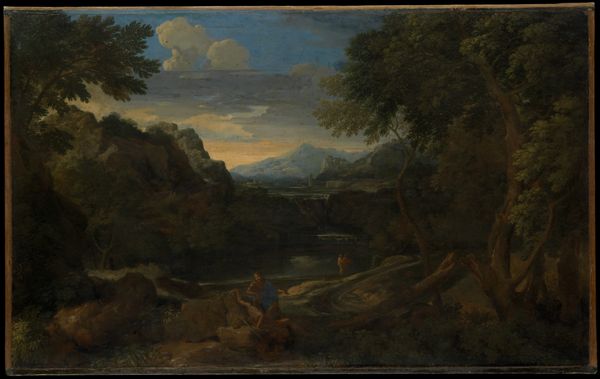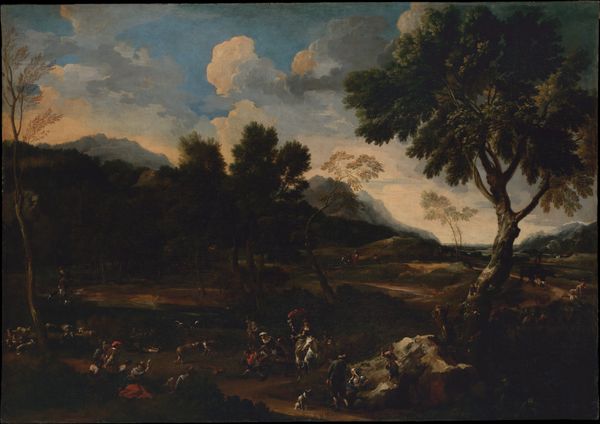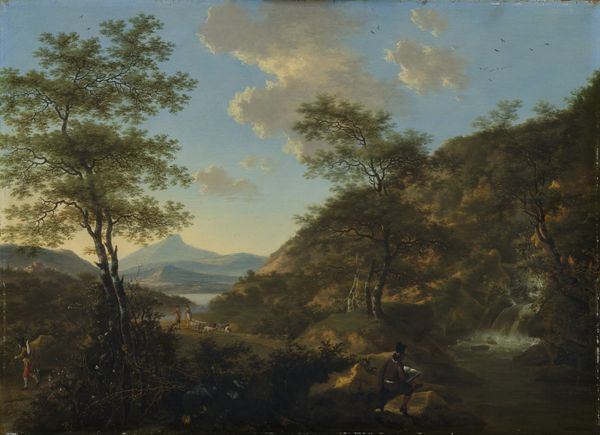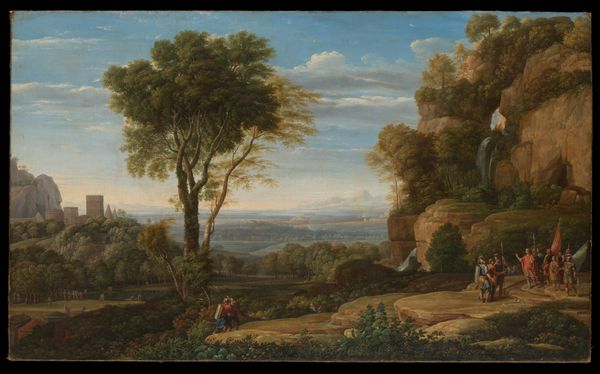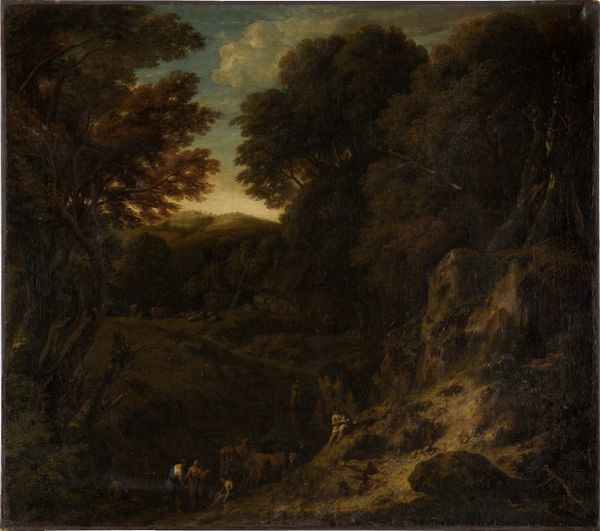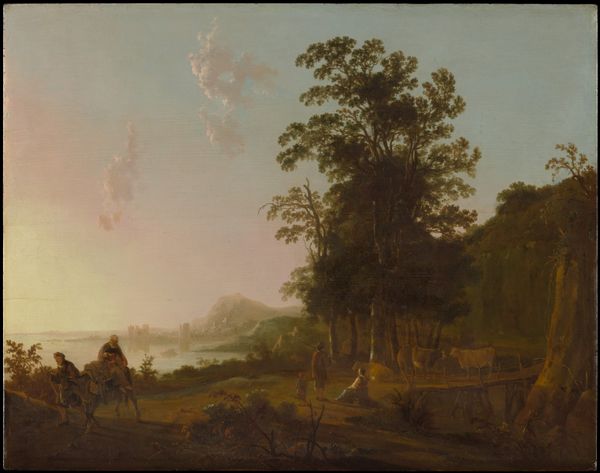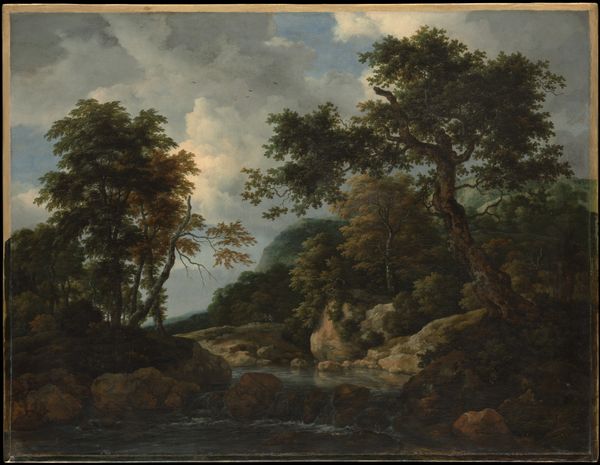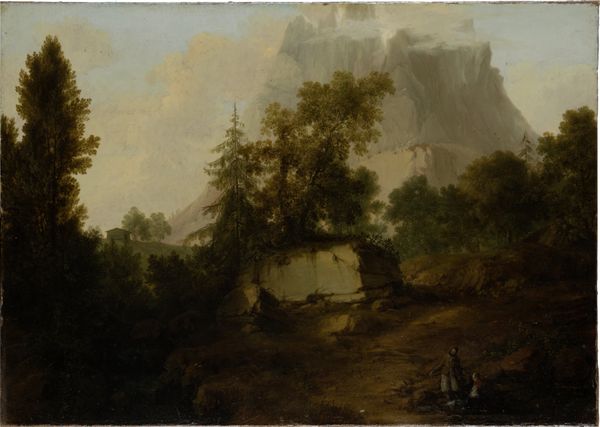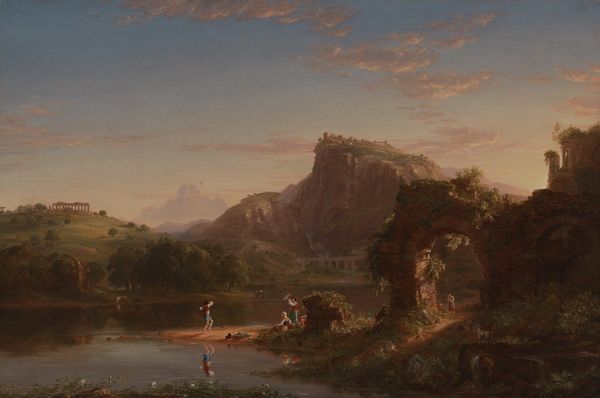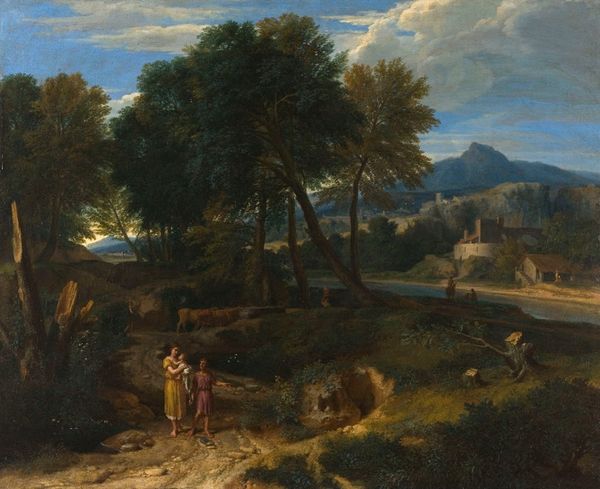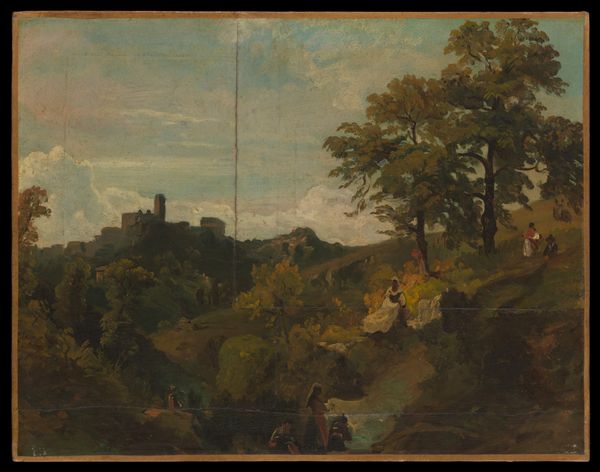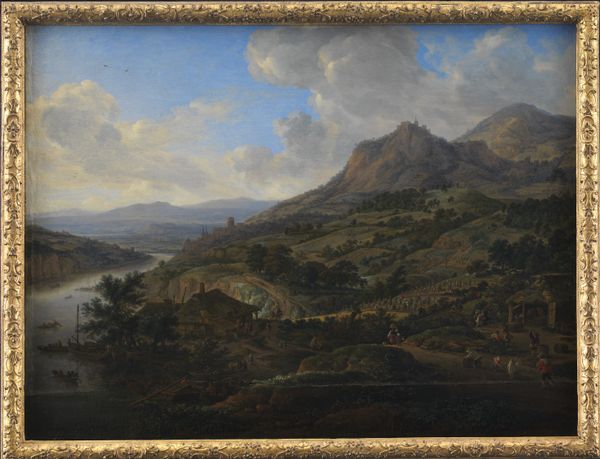
painting, oil-paint, mural
#
narrative-art
#
painting
#
oil-paint
#
landscape
#
figuration
#
mountain
#
history-painting
#
mural
Dimensions: 47 x 70 in. (119.4 x 177.8 cm)
Copyright: Public Domain
Curator: Isn't this fascinating? Here we have "Mercury and Battus," painted sometime between 1662 and 1679 by Francisque Millet. It's an oil on canvas, residing here at the Metropolitan Museum of Art. Editor: It does feel...brooding. Like a secret is about to be revealed or, maybe stolen. The mountain backdrop really looms over everything. Curator: Indeed. Millet's landscape tradition really shines here, especially considering its socio-political climate at the time, which often focused on mythological tales as veiled critiques of power. It's less about pretty landscapes and more about leveraging narrative. Editor: You know, I find that little glint in the water so curious. Like something valuable is about to change hands in secret, as though to say "don't trust that pretty scenery". And that hunched figure, what's he reaching for? It's hard to tell what he's about to do! Curator: That’s Battus, you see. In the story, Mercury, disguised as a mortal, attempts to bribe Battus for silence after stealing Apollo’s cattle. That figure reaching out is likely being offered gold by Mercury in exchange for silence. What does that make us think about contemporary political institutions that commission art and trade on silence? Editor: So it’s a power play disguised as a peaceful scene. I love how Millet subverts the genre, turning idyllic landscapes into a stage for intrigue and commentary. Do you think the darkness in the forest symbolizes moral ambiguity? It seems a pointed choice if one wants to critique power. Curator: Absolutely. And those craggy mountains— they remind us that nature itself can be unforgiving and complicit. Just as institutions can harbor corrupt bargains within beautiful halls. It prompts us to ask— who’s paying whom to stay silent? Editor: It all circles back to how power dictates narratives. We're conditioned to see beautiful scenery, but here it frames moral corruption. Food for thought about every beautiful gallery that displays art in the world! Curator: Precisely! It's about reading beneath the surface, both of the painting and the structures it represents. Millet’s painting gives so much to reflect upon.
Comments
No comments
Be the first to comment and join the conversation on the ultimate creative platform.
